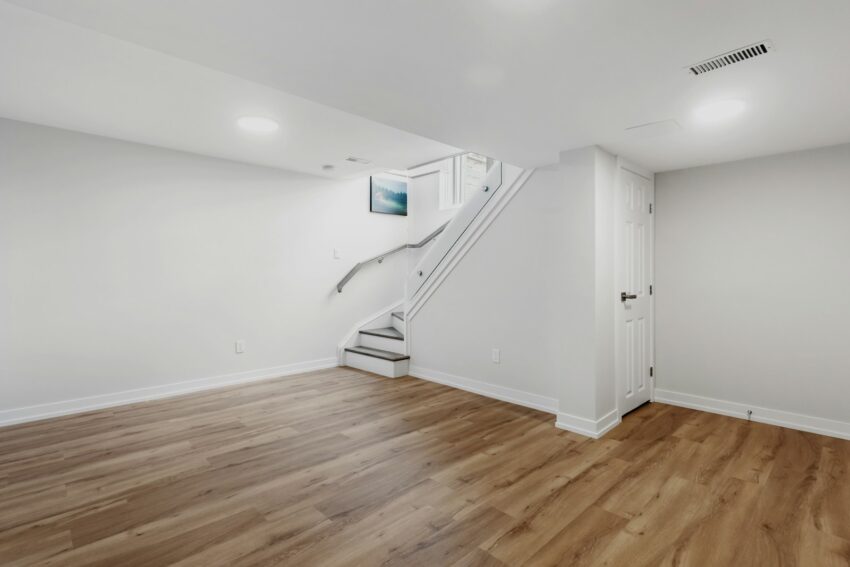Waterproofing your basement might seem like an extensive task requiring much effort, but it is undeniably worth every bit of the hustle when you consider the benefits. Basements are prone to water infiltration due to their underground location. Keeping them dry is crucial, not just for the structure of your home but also for the health and comfort of your family. In this comprehensive guide, we’ll walk you through the essential techniques for effective basement waterproofing, discuss common issues caused by water infiltration, and highlight the importance of maintaining a dry basement.

A dry basement is critical for the integrity of your home. Water seepage damages the foundation and structure and can lead to mold growth, creating an unhealthy living environment. Understanding the importance of basement waterproofing and implementing essential techniques can save homeowners considerable time, effort, and money in the long run.
Importance of Basement Waterproofing
Water damage accounts for a significant percentage of homeowners’ insurance claims, with billions spent annually on remediation. Water infiltration can weaken your home’s foundation, leading to costly repairs. Waterproofing your basement is a proactive measure that ensures the longevity and safety of your dwelling.
Common Issues Caused by Water Infiltration
Moisture in the basement can lead to many problems, such as mold and mildew growth, rotting of wooden elements, rusting of metal fixtures, and deterioration of the overall structure. It can also attract pests and create an unpleasant, musty odor. If you already have mold in the basement, consulting a mold removal contractor is the best step to ensure the mold is safely removed and the moisture problem is properly fixed to prevent future issues.

Benefits of a Dry Basement
A waterproofed basement adds value to your home, increases usable space, and provides a healthy environment free from mold and mildew. It also ensures the longevity of the building’s structure by preventing water damage.
Assessing the Basement
The first step in effective basement waterproofing is identifying areas susceptible to water infiltration. Look for cracks, gaps, and other potential entry points for moisture. A simple moisture test can help determine your basement’s humidity level. Tape a piece of plastic sheeting to the basement wall or floor and check for condensation over a few days. Any moisture indicates a need for waterproofing measures.
Interior Waterproofing Techniques
Use a quality sealant to fill any cracks or gaps in your basement walls and floor. It is an essential step in preventing water seepage. Waterproof paint and other coatings can be applied to basement walls to prevent moisture absorption. These coatings form a barrier against water infiltration.
A sump pump is crucial for keeping your basement dry, especially in areas prone to flooding. It pumps out water accumulating in a sump pit, preventing water from reaching the basement’s interior.
Installing a Backwater Valve
It’s critical to mention the installation of a backwater valve as a preventive measure. This valve prevents sewage from backing up into your basement, vital during heavy rainfall or floods. It’s a straightforward yet highly effective technique to enhance your waterproofing efforts. Various services like https://qualityagebuild.com/services/backwater-valve-installation/ specialize in backwater valve installation, ensuring the job is done correctly and efficiently. These professionals can assess your home’s plumbing system, recommend the best valve for your needs, and install it with minimal disruption.
Exterior Waterproofing Techniques
Sometimes, effective waterproofing requires excavation to expose the foundation for sealing. A waterproof membrane can then be applied to the exterior walls, providing a robust barrier against water.
Proper drainage around your home’s foundation is vital. Installing a French drain or a similar drainage system can help route water away from your basement, effectively preventing infiltration. French drains are among the most popular drainage solutions. They consist of a trench filled with gravel and a perforated pipe that redirects water away from your home.
Thoughtful landscaping can significantly enhance your home’s water management. Sloping the ground away from your foundation and choosing plants that absorb excess moisture can be highly effective.
Preventive Measures and Maintenance
Routine inspections of your basement and home’s exterior can help identify potential issues before they escalate into major problems. Using dehumidifiers in your basement can keep humidity levels in check, preventing the conditions that lead to mold and mildew growth.
Regular maintenance, such as cleaning gutters and repairing downspouts, can significantly contribute to keeping your basement dry.
Dumpster Rental for Basement Cleanouts and Repairs
Damaged materials or debris often must be removed when undertaking waterproofing projects. This is where dumpster rental comes into play, particularly in the second half of our guide. Renting a dumpster provides a convenient and efficient way to dispose of waste, helping to keep the project site clean and organized. For example, https://qualityagebuild.com/services/dumpster-rental/ service ensures that you have the right size and type of dumpster to handle the specific needs of your project, allowing you to focus on completing the job without the hassle of managing debris disposal.
Conclusion
Effective basement waterproofing requires a comprehensive approach, combining interior and exterior techniques with preventive measures and routine maintenance. Sealing cracks, installing drainage systems, and managing humidity are vital to ensuring a dry and healthy basement. Additionally, installing a backwater valve and considering a dumpster rental for project clean-up are practical steps in this process.
The long-term benefits of waterproofing, such as structural integrity, increased property value, and a healthier living environment, cannot be overstated. We encourage homeowners to take proactive measures to protect their homes from water damage using the techniques outlined in this guide. A dry basement is a valuable asset and a cornerstone of a safe and comfortable home.
